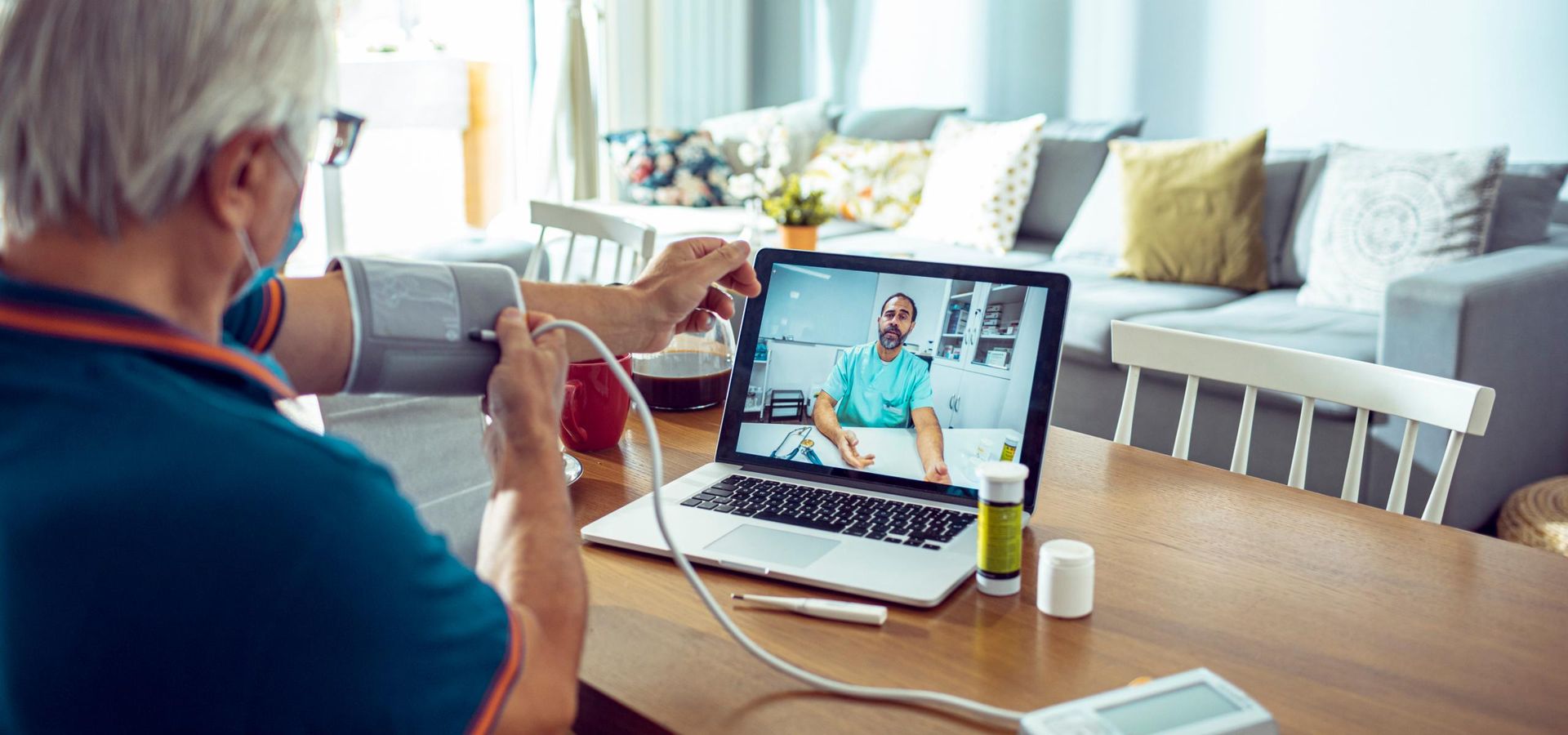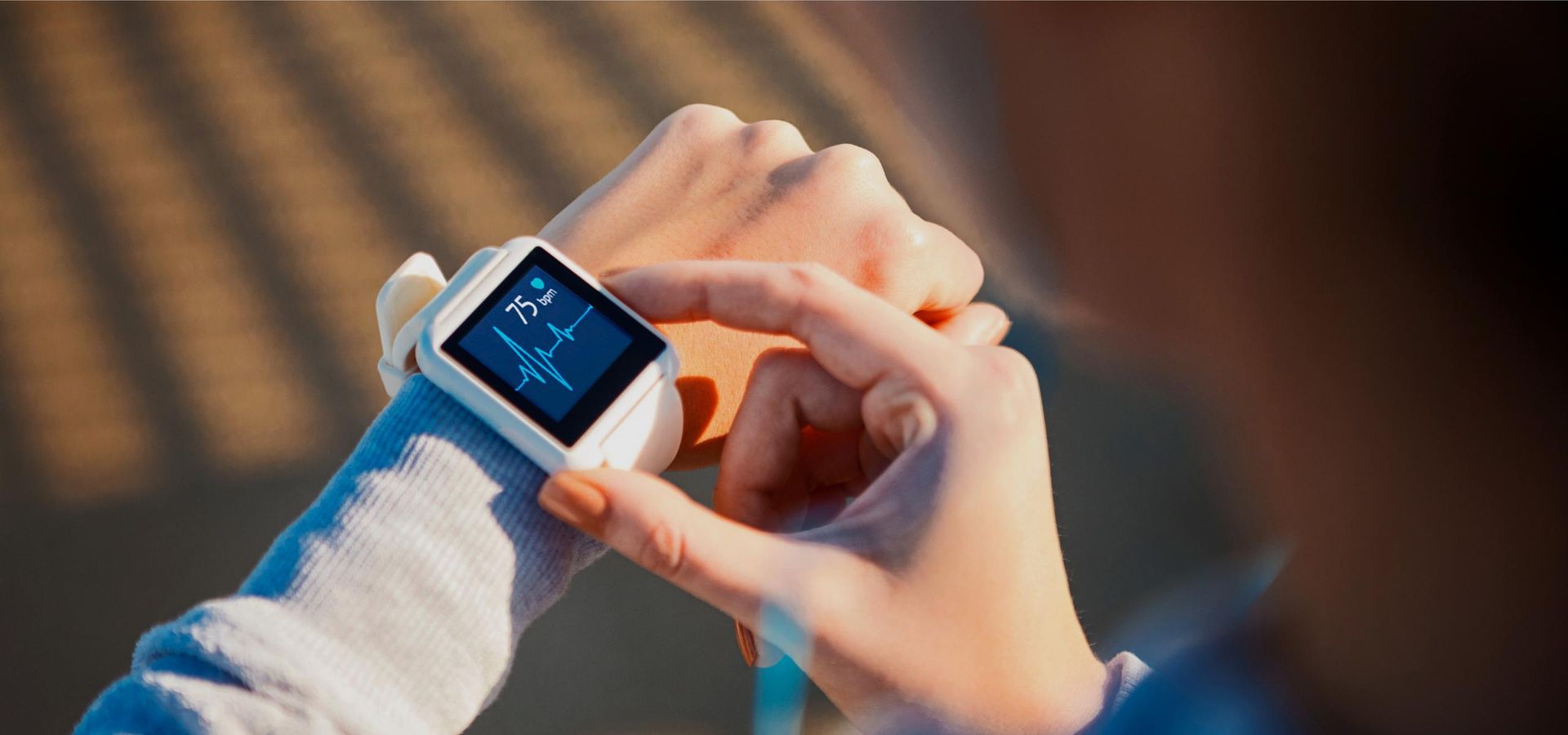
Neurology telemedicine: a full solution overview
May 13, 2023
- Home
- Healthcare software development solutions & services
- Telemedicine software
- Neurology telemedicine

by Sergey Ivanov,
Head of Healthcare Center of Excellence
The European Academy of Neurology states that 1 in 3 people suffer from a neurological condition at some point in their lives, which means that the demand for qualified neurological help is always high. At the same time, like the rest of the healthcare subspecialties, the neurological field is suffering from personnel shortages and burnout. For care providers who want to navigate these challenges and enhance the quality of care delivery, telemedicine solutions tuned for neurological specialties can be the best solution.
Neurology telemedicine market statistics
neurologists are currently employed in the US
Zippia
neurologists used telehealth in 2021
American Medical Association
neurologists agreed that telehealth increased their professional satisfaction
American Medical Association
Ready to provide neurological care through telehealth?
The architecture of a neurological telemedicine solution
Solutions developed for the department of neurology include the same core elements as general-use software for telehealth appointments: separate servers for video and audio streaming as well as for data storage and processing. However, the variety of additional integrations and interfaces for medical professionals, admins, and patient access makes the solution neurology-specific.
Key capabilities of telemedicine for neurology
Functionality differs across telehealth neurology applications depending on the providers’ specialties and service scopes. Still, the solutions most commonly include features for secure communication with patients, monitoring their conditions, and engaging with them.
Communication
- Messaging, including image and video exchange
- High-quality video and audio conferencing
- Appointment scheduling
- Referral management
- Electronic prescriptions
Monitoring and analysis
- Neurological condition monitoring with RPM tools
- Medical image and symptom log analysis
- Condition autoidentification based on patterns
- Personalized recommendations for preventing neurological conditions
Patient education and engagement
- Video, audio, image, and text library with tips on self-checkups and managing neurological disorders
- Patient knowledge assessment tools
- Secure storage of video visit records
- Symptoms and health log updates
- Integration with EHR/EMR systems
Security
- Compliance with industry privacy and security regulations
- Secure data transfer and communication protocols
- Role-based access
- Two-step authorization
Essential telehealth software integrations
Enable neurologists to access patients’ health history, including immunization, allergy, and medication records, for more precise diagnosis and treatment by connecting the telehealth platform to the EHR system of choice.
With a PMS integration, you can streamline medication management for patients and their caregivers, including receiving prescriptions, validation, refills, or changes due to adverse reactions.
Facilitate 24/7 condition monitoring and help neurologists examine patients more thoroughly using specialized devices that instantly exchange data with the telehealth app.
Connect the teleneurology platform to the laboratory information system and give neurology specialists faster access to detailed lab test reports for speedy diagnosis or treatment monitoring.
With an analytics software integration, neurologists can extract valuable insights from tests, symptom logs, EHR, and medical images for accurate diagnostics and offer personalized data-based treatment to patients.
Billing and insurance management
Make sure your medical personnel gets reimbursement for teleneurology services faster and in full, and simplify payment through the teleneurology app by connecting it to financial software.
Teleneurology use cases
Online neurologists can perform various tasks through telehealth, from swift diagnoses and urgent patient care recommendations to chronic neurological conditions management and annual checkups. Therefore, such remote care delivery is perfect for those unable to make in-person visits to the specialist’s office: patients with restricted mobility or incapacitating mental health conditions, those belonging to the high-risk groups during the pandemic, pediatric patients, the elderly, or people living in medically underserved regions.
Acute
- Stroke care
- Epilepsy episode
- Encephalitis
- Head injuries
- Seizure origin detection
- Headache
- Cognitive dysregulation
Chronic
- Parkinson disease
- Chronic depression
- Multiple sclerosis
- Normal pressure hydrocephalus
- Neuromuscular abnormalities
- Neuro-oncology
- Dementia
- Movement disorders
Routine
- Regular checkups and follow-ups
- Prevention of cerebrovascular diseases
- Cerebral aneurysm detection
- Montreal Cognitive Assessment (MoCA)
- Mini-Mental State Examination
Looking for a reliable telehealth partner?
How different user groups leverage teleneurology software
Clinicians, patients, caregivers, and system admins perform different actions and need access to different types of information in a teleneurology application. Therefore, the teleneurology user experience varies significantly for each user group, and developers should cater to them all.
Patients and caregivers
Medical professionals
Admins
Real-life examples of telemedicine in neurology
Teleneurology Service in Stony Brook
NeuroNow
Teleneurology implementation challenges
As a relatively new technology in the healthcare field, teleneurology has its limitations. While some challenges, like licensing difficulties for out-of-state specialists, need to be addressed on the legislative level, others can be easily solved by an experienced implementation partner.
Challenges
Solutions
High costs
Physicians’ reluctance to learn a new technology
Privacy and security concerns
Teleneurology software should be developed according to telehealth interoperability policies and security protocols. It should also employ standard security capabilities like end-to-end data encryption and two-factor authentication and comply with HIPAA, GDPR, or other local regulations.
Complications with obtaining medical images like EEG, CT-scans
It is true that some medical images still have to be taken in-person at a special facility. Yet, medical IoT is developing rapidly, so more and more diagnostic procedures can be performed in real-time during virtual visits. Remote EEG services are already available for ICU and ER units and are in the testing stage for in-home use.
Benefits of telemedicine for neurology
The AAN confirms that telemedicine for neurology benefits multiple demographic groups of patients, medical professionals, and healthcare organizations if implemented correctly.

- Wider service area coverage
- Flexible working hours and location
- Reduced facility costs
- More engaged patients
- Faster reimbursement
- Better health outcomes
- More frequent checkups
- Easier access to health information
- Faster emergency response
- Travel time and costs saving
- No exposure to hospital-acquired infections
- Streamlined referrals
Teleneurology adoption success factors
Interoperable
to transfer data seamlessly between other healthcare software
Properly implemented
with clear objectives and a roadmap in mind
Reliable
to ensure stable performance and quick recovery in case of disruptions
Used by trained personnel
to ensure the workflows’ efficiency and user satisfaction
User-friendly
to prevent burnout in neurologists and other medical staff
Secure and compliant
to protect patient data and your neurologists’ licenses
Flexible
easy to update when your institution’s goals or needs change
Scalable
to support you in growing your patient base and service portfolio
Teleneurology solution

Save lives by employing teleneurology
The human brain is the most powerful and fragile organ in our bodies, making fast medical response essential in case of injury or malfunction. Therefore, healthcare organizations should strive to give patients easy access to quality neurological services even if no neurology specialists are in the area. Teleneurology helps neurology specialists reach patients in underserved areas, and those who can’t travel to the hospital frequently due to health conditions. Providers who have adopted teleneurology report elevated levels of patient trust with fewer readmissions and no-shows, improved professional satisfaction from the medical specialists, and increased revenue. If you want to tap into such benefits, Itransition can be your reliable telehealth technology partner.

Need help with implementing a teleneurology app?
FAQs about telemedicine for neurology
How much does developing a telemedicine app for neurology cost?
Do I need a custom teleneurology app?
How long does it take to implement teleneurology software?
Can I just use Skype, Messenger, or any other similar system to provide consultations?
We highly advise against using any software that is not HIPAA-compliant or hasn’t been developed according to the healthcare industry security regulations. This will jeopardize your patients’ data and can result in penalties for your organization. You can, however, use Microsoft Teams to provide teleneurology consultations if your organization implemented it as a part of the Microsoft Cloud for Healthcare solution, which is HIPAA-compliant.
Is there proof that video visits are as effective as office visits?

Service
Telemedicine software development: key features, integrations & services
Itransition offers end-to-end custom telemedicine software development and implementation services for healthcare organizations of any size and specialty.

Case study
A remote patient monitoring and mobile telehealth suite
Learn how Itransition developed a remote patient monitoring and telehealth platform for sexual assault victims for a US research center.

Service
Healthcare mobile app development
Tailored healthcare mobile solutions from certified medical app developers for convenient, on-the-go healthcare delivery and optimization of medical workflows.

Service
Medical device software development services
As a medical device software development company, Itransition implements apps for precise diagnostics, streamlined care delivery and management. Get a quote.

Insights
Telemedicine for pediatrics: a comprehensive overview
Discover how to successfully choose, integrate, and implement telemedicine solutions for pediatrics to improve your medical childcare.
More about healthcare software services
Services
EHR
Telehealth